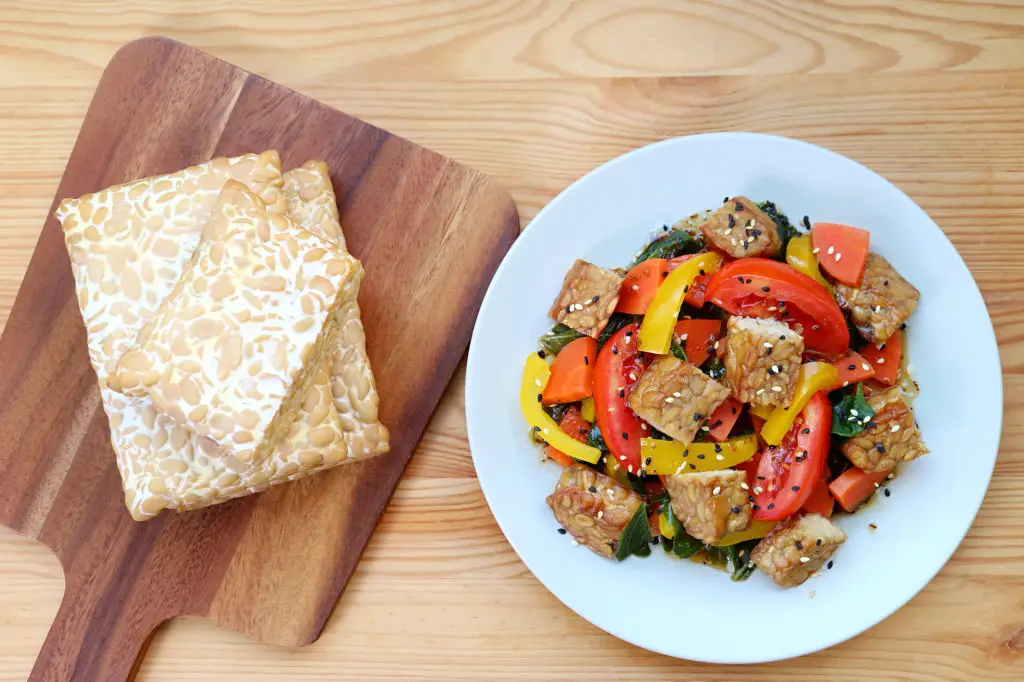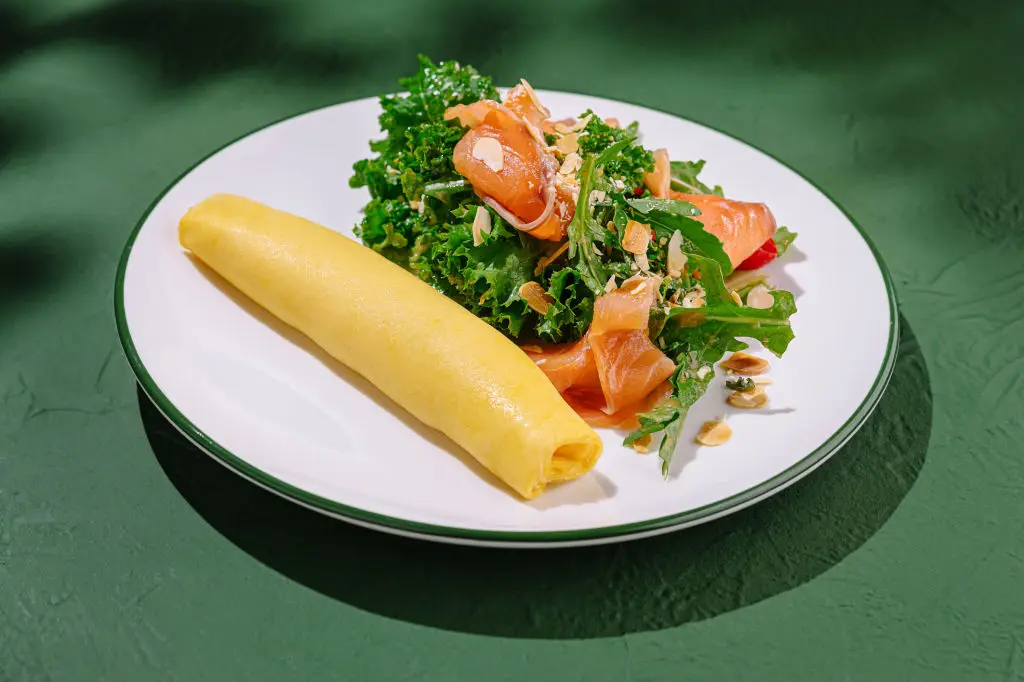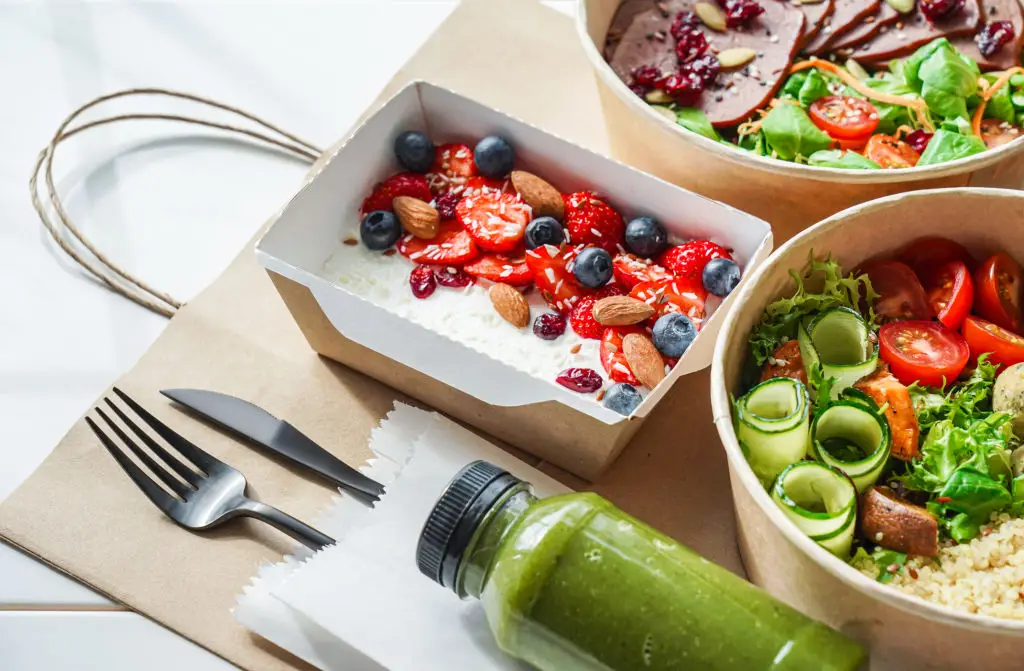11 Fat-Burning Feasts That Support Your Metabolism Overnight
Want dinners that do more than fill your plate? This collection focuses on meals that combine high-thermic proteins, fiber-rich sides, and metabolism-friendly spices to support your body's overnight processes. Research shows that protein carries the highest thermic effect of food, which means your body uses more energy to digest it compared with carbs or fats. That doesn’t mean one dinner will melt away pounds while you sleep, but choosing a protein-forward, fiber-filled meal in the evening can help steady blood sugar, support muscle maintenance, and gently boost calorie burn during digestion. Aim for roughly 25 to 30 grams of protein at dinner when you can — that level is commonly recommended by registered dietitians for satiety and recovery. Add in a touch of capsaicin from chiles or warming spices, and you get another small metabolic nudge. Also prioritize vegetables and legumes for fiber; they feed helpful gut bacteria and promote steady energy overnight. These eleven dinners are practical, varied for different diets, and built for real life. Each entry shows why the ingredients work, gives a simple prep tip, and includes a realistic protein estimate so you can adapt meals to your appetite and schedule. Think of this as gentle guidance: small, consistent swaps that respect your time and help you feel more nourished as the day winds down.
1. High-Protein Salmon with Chili-Lime

Salmon brings a solid serving of high-quality protein plus omega-3 fats that support general metabolic health and inflammation balance. A 4-ounce cooked salmon fillet typically provides about 25 to 30 grams of protein, which hits the lean-protein target many dietitians suggest for a satisfying dinner. Add a chili-lime rub to the fish before broiling, and you introduce capsaicin from chili and bright citrus that lift flavor and add a small thermogenic effect. Cook the salmon quickly under high heat so it stays tender and flaky, then serve it alongside roasted broccoli or steamed green beans for fiber and volume. This combo keeps blood sugar steadier overnight, and the protein supports muscle repair during sleep — useful as we age and want to maintain strength. If you want more heat, sprinkle extra chili flakes; for a milder palate, use smoked paprika for warmth without intense spice. Keep portions sensible and balance the plate with vegetables and a modest whole grain or legume if you need extra carbs for satiety.
2. Lean Chicken with Roasted Brussels and Quinoa

Simple roasted chicken breast is a dependable way to get 25 to 35 grams of lean protein at dinner while keeping saturated fat low. Pair it with roasted Brussels sprouts for fiber and quinoa for a plant-based protein boost and complete amino acid coverage. Quinoa adds texture and slow-digesting carbohydrates that help prevent nighttime blood-sugar dips, which can interfere with good sleep and recovery. Toss Brussels sprouts in a little olive oil and roast until caramelized to draw out sweetness and make the meal feel indulgent without heavy sauce. A sheet-pan approach saves time: arrange chicken, Brussels, and a tray of pre-cooked quinoa warmed at the end. The mixed plate supports the thermic effect of protein, adds fiber for gut health, and offers iron and other micronutrients linked to metabolic function. For an easier option, use boneless skinless chicken thighs if you prefer more flavor, and scale quinoa to your energy needs.
3. Tempeh Stir-Fry with Red Peppers and Ginger

Tempeh makes a great plant-based main that’s higher in protein and easier to digest than some other soy forms; a 3-ounce serving often supplies around 15 to 18 grams of protein. Combine tempeh with red bell peppers for color and a mild capsaicin boost, plus fresh ginger to aid digestion and add warming flavor. Stir-frying at high heat gives the tempeh a crisp edge and keeps vegetables vibrant, so dinner feels quick and fresh. Add a small handful of cashews or edamame for texture and more protein if you need it. This meal balances the thermic advantage of protein with fiber from vegetables and the microbiome-supporting benefits of plant foods. Use tamari or a low-sugar teriyaki glaze sparingly to keep the carbohydrate content moderate. If you’re tracking protein targets, increase portion size to reach 25–30 grams as desired, or serve with a side of brown rice for extra sustained energy.
4. Turkey and Black Bean Chili

Turkey chili pairs lean ground turkey with fiber-rich black beans for a filling dinner that digests more slowly than a carb-heavy plate. A cup of turkey chili with beans can provide roughly 25 grams of combined protein, depending on recipe proportions. Spices like cumin, chili powder, and cayenne add flavor and a mild thermogenic effect while keeping sodium in check if you use low-sodium broth and canned beans. Beans also supply soluble fiber that feeds beneficial gut bacteria, which research links to overall metabolic health. Simmer the chili low and slow for deeper flavor or make a large batch and refrigerate for easy reheating. Top with a scoop of plain Greek yogurt or diced avocado to add creamy texture and some healthy fats, which help with satiety. This one-pot dinner is practical for weeknights and doubles as a good meal-prep option for busy weeks.
5. Lemon-Garlic Shrimp with Lentil Salad

Lean seafood like shrimp is naturally low in calories and high in protein, with a 4-ounce portion giving roughly 20 to 25 grams of protein. Pair shrimp with a warm or chilled lentil salad for a meal that combines quick-digesting protein and slow-digesting fiber. Lentils provide soluble fiber that supports the gut microbiome, and their starch profile helps steady blood sugar overnight. Dress the salad with lemon, garlic, and a drizzle of olive oil for bright flavor without heavy sauces. Quick-sear the shrimp so they remain tender, then toss them with the lentils and fresh herbs. This combination delivers iodine and selenium from seafood alongside plant-based nutrients, supporting thyroid-related metabolic pathways. If you need more protein, increase the shrimp portion or fold in a small handful of crumbled feta for added protein and calcium.
6. Lentil and Chickpea Curry with Spinach

A hearty lentil and chickpea curry delivers plant proteins and lots of fiber in a single pot, which supports fullness and gradual digestion through the night. A generous bowl can provide 18 to 25 grams of protein depending on serving size, and spices like turmeric, cumin, and black pepper add flavor plus possible metabolic benefits. Turmeric contains curcumin, which some studies associate with reduced inflammation and metabolic support when combined with a balanced lifestyle. Include fresh spinach near the end of cooking for iron, magnesium, and additional fiber. Serve the curry over a small portion of brown rice or cauliflower rice if you prefer fewer carbs. The goal here is a satisfying dinner that nourishes gut health, stabilizes glucose, and gives your body the amino acids needed for overnight maintenance. Make a double batch and freeze portions for busy nights.
7. Lean Beef Stir with Broccoli and Mushrooms

Lean cuts of beef supply bioavailable iron, zinc, and complete protein — all nutrients that support thyroid and metabolic function. A 3-ounce cooked portion of lean beef often contains 22 to 26 grams of protein; pairing it with fiber-forward broccoli and mushrooms rounds out the plate. Sear the beef quickly on high heat to lock in juices, then stir in vegetables tossed with a splash of low-sodium soy sauce or tamari. Mushrooms add umami and B vitamins, while broccoli brings fiber and vitamin C to aid iron absorption. This dinner supports muscle maintenance and metabolic enzymes without being overly heavy before bed. Use lean flank or sirloin and trim visible fat to keep saturated fat lower, and serve with a modest portion of whole-grain noodles or brown rice if you need more carbohydrate for recovery after evening activity.
8. Greek Yogurt-Marinated Chicken with Cucumber Salad

Marinating chicken in plain Greek yogurt tenderizes the meat and adds protein to the dish; a two-tablespoon marinade plus a 4-ounce chicken breast often yields the meal protein target when combined. Greek yogurt contributes probiotics and extra protein, and the calcium may help with nutrient balance for sleep. Pair the chicken with a cucumber-and-dill salad dressed in lemon and olive oil for crispness and fiber. Marinate the chicken for 30 to 60 minutes if you have time, then grill or bake until juices run clear. This lighter dinner suits evenings when you want satisfaction without heaviness, and the dairy-based marinade is a gentle way to include fermented food benefits for gut health. If you avoid dairy, try a soy yogurt or a citrus-herb marinade and add a side of lentils for extra protein.
9. Tofu Sheet-Pan with Sweet Potato and Kale

Firm tofu supplies plant protein and pairs nicely with sweet potato for fiber and slow-release carbohydrates that aid overnight satiety. Press the tofu briefly to remove excess moisture, cube it, then toss everything with a light glaze of tamari and sesame oil. Roast on a sheet-pan until the sweet potatoes soften and kale gets slightly crisped on the edges. A typical serving here can offer 15 to 25 grams of protein depending on tofu portion size, and the fiber from sweet potato and kale supports digestion and steady blood sugar. Walnuts or pumpkin seeds sprinkled on top add texture and a dose of healthy fats for fullness. This is an easy, hands-off dinner that stores well for lunches, too. Adjust portions to reach your preferred protein target while keeping the plate colorful.
10. Veggie Omelet with Smoked Salmon

Eggs are an economical, high-TEF protein source that can work well for dinners especially when you want something light and restorative. Two to three large eggs paired with 1–2 ounces of smoked salmon will typically deliver about 20 to 30 grams of protein. Add a mix of spinach, cherry tomatoes, and scallions for fiber and micronutrients, and cook the omelet gently so it stays creamy. Smoked salmon brings iodine and omega-3s, which support metabolic pathways and overall nutrition. Serve with a slice of whole-grain toast or a small side salad to round things out if desired. This dinner is quick, customizable, and ideal on nights when you don’t want an overly heavy meal but still want solid protein before bed.
11. Baked Cod with Walnut-Pesto and Roasted Asparagus

Cod is a lean white fish that provides a delicate source of protein and selenium, a micronutrient important for thyroid health and antioxidant defense. A 4-ounce fillet usually contains around 20 to 25 grams of protein. Top the cod with a walnut-based pesto for healthy fats and a satisfying texture, then roast asparagus alongside for fiber and folate. The healthy fats from walnuts help with satiety, while the lean protein supports overnight muscle repair and metabolic processes. Bake this at a high temperature for 8–12 minutes so the fish remains flaky but not dry, and spoon the pesto over just before serving. This meal is elegant yet quick, and it’s easy to scale portions to meet your preferred protein target while keeping the plate balanced with vegetables.
Wrap-Up: Small Evening Choices with Lasting Impact

These eleven dinners are not magic bullets, but they do follow consistent principles that support metabolism responsibly and sustainably. Prioritize lean, high-quality protein at dinner — aiming for roughly 25 to 30 grams when possible — to harness the thermic effect of food and to help maintain muscle during sleep. Add fiber-rich vegetables, legumes, and modest whole grains so digestion is steady and gut bacteria have fuel to do their work. Use thermogenic spices like chili, ginger, and black pepper for flavor and a light metabolic boost. Pay attention to portion sizes, sleep quality, and regular movement, because these elements work together with food choices to shape metabolism over time. If you have specific health conditions, thyroid concerns, or dietary restrictions, check with a registered dietitian or your healthcare provider before making big changes. Small, consistent swaps are kinder and more effective than overnight overhauls. Try one new dinner this week, notice how it makes you feel, and adjust portions or ingredients in ways that support your energy, sleep, and long-term wellness goals.
